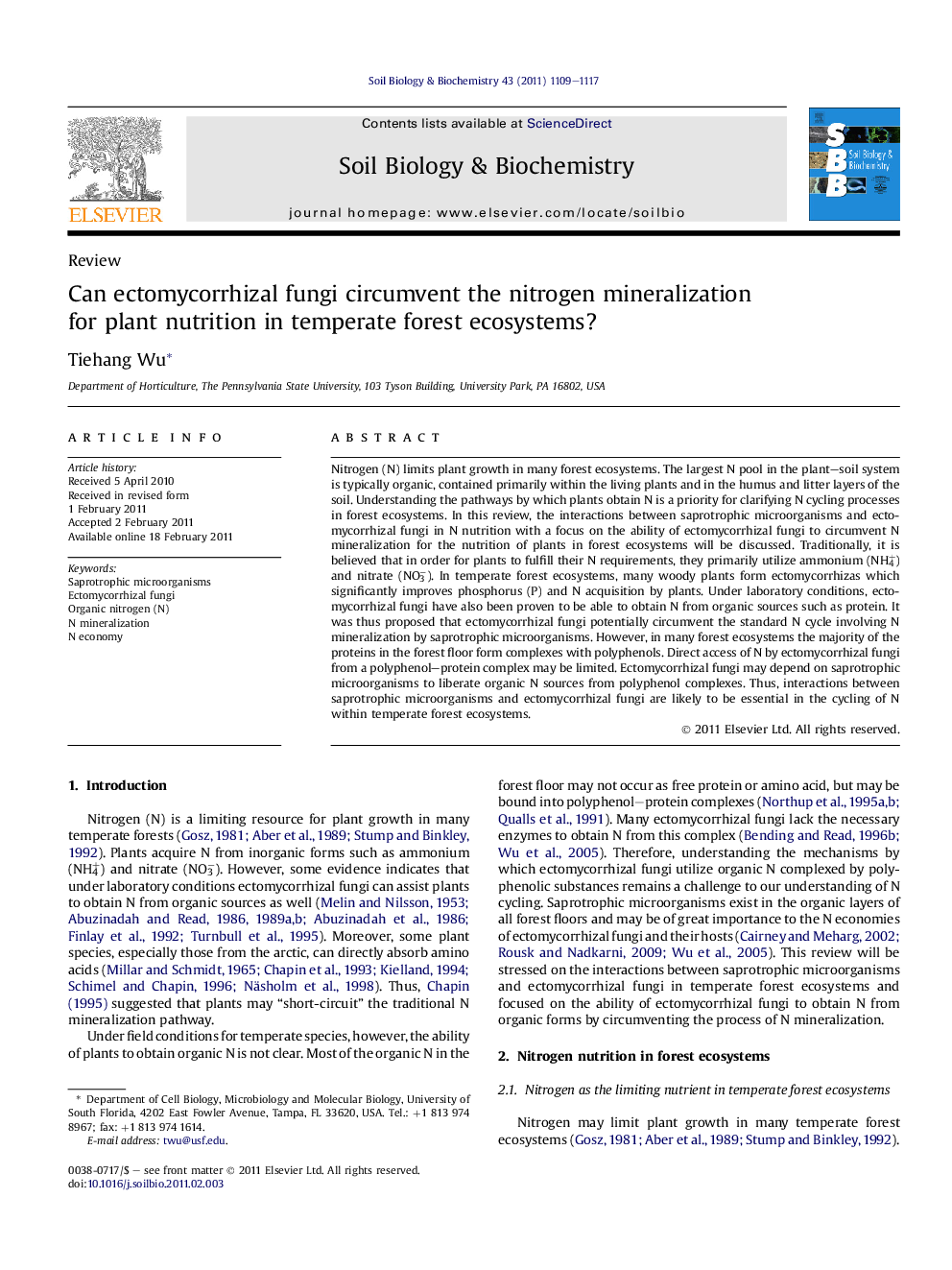| Article ID | Journal | Published Year | Pages | File Type |
|---|---|---|---|---|
| 2025286 | Soil Biology and Biochemistry | 2011 | 9 Pages |
Nitrogen (N) limits plant growth in many forest ecosystems. The largest N pool in the plant–soil system is typically organic, contained primarily within the living plants and in the humus and litter layers of the soil. Understanding the pathways by which plants obtain N is a priority for clarifying N cycling processes in forest ecosystems. In this review, the interactions between saprotrophic microorganisms and ectomycorrhizal fungi in N nutrition with a focus on the ability of ectomycorrhizal fungi to circumvent N mineralization for the nutrition of plants in forest ecosystems will be discussed. Traditionally, it is believed that in order for plants to fulfill their N requirements, they primarily utilize ammonium (NH4+) and nitrate (NO3−). In temperate forest ecosystems, many woody plants form ectomycorrhizas which significantly improves phosphorus (P) and N acquisition by plants. Under laboratory conditions, ectomycorrhizal fungi have also been proven to be able to obtain N from organic sources such as protein. It was thus proposed that ectomycorrhizal fungi potentially circumvent the standard N cycle involving N mineralization by saprotrophic microorganisms. However, in many forest ecosystems the majority of the proteins in the forest floor form complexes with polyphenols. Direct access of N by ectomycorrhizal fungi from a polyphenol–protein complex may be limited. Ectomycorrhizal fungi may depend on saprotrophic microorganisms to liberate organic N sources from polyphenol complexes. Thus, interactions between saprotrophic microorganisms and ectomycorrhizal fungi are likely to be essential in the cycling of N within temperate forest ecosystems.
► The ability of ectomycorrhizal fungi to circumvent N mineralization in temperate forest ecosystems was reviewed. ► Under laboratory conditions, ectomycorrhizal fungi have been proven to obtain N from organic sources. ► It was thus proposed that ectomycorrhizal fungi circumvent the standard N mineralization by saprotroph. ► In many forest ecosystems the majority of the proteins form complexes with polyphenols, direct access of N by ectomycorrhizal fungi from a polyphenol protein complex may be limited. ► Interactions between saprotroph and ectomycorrhizal fungi are likely to be essential in the cycling of N within temperate forest ecosystems.
